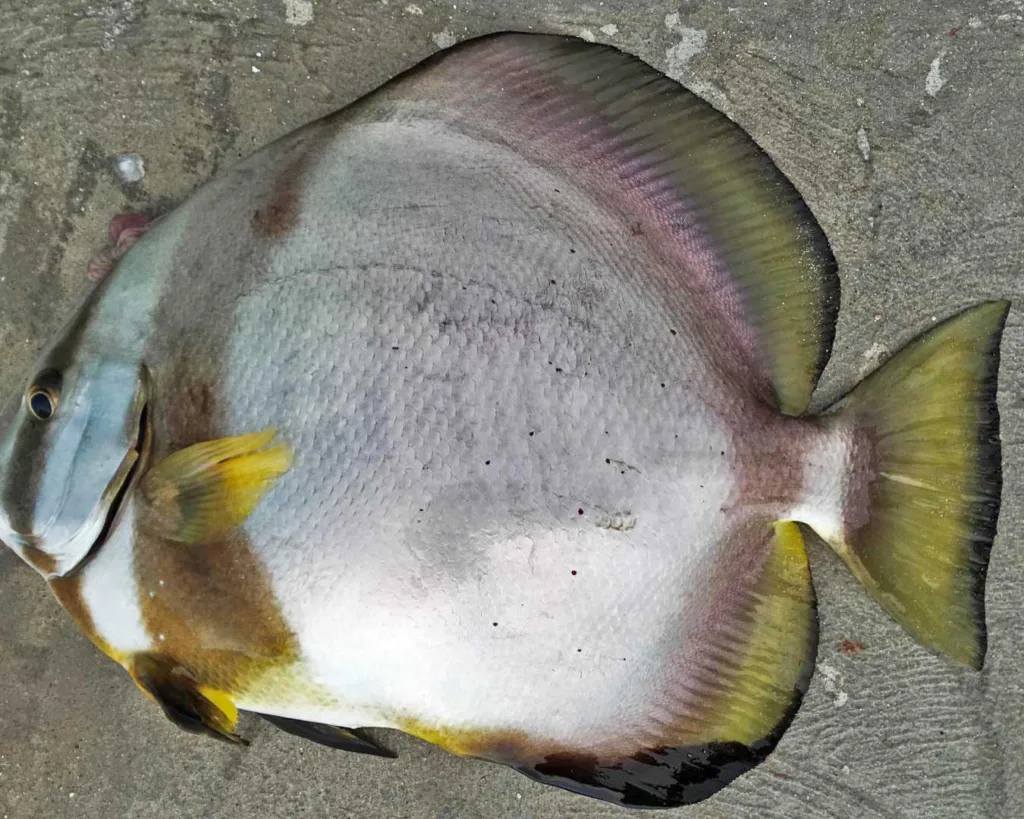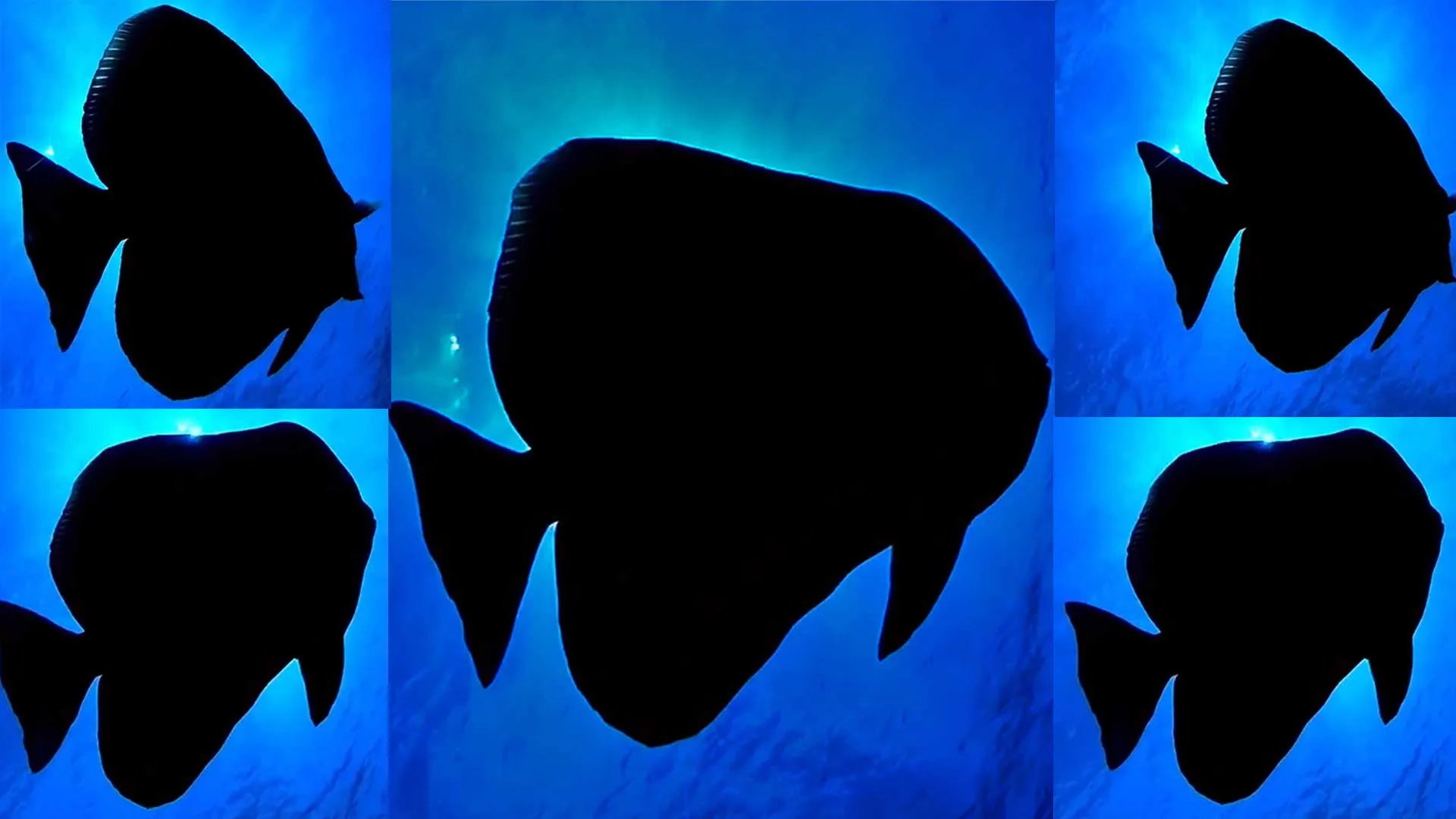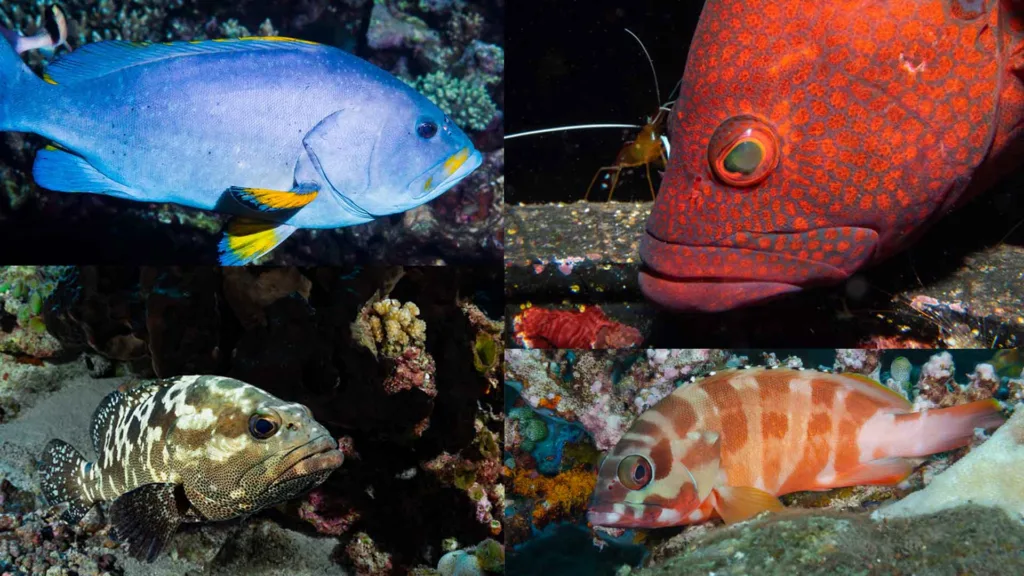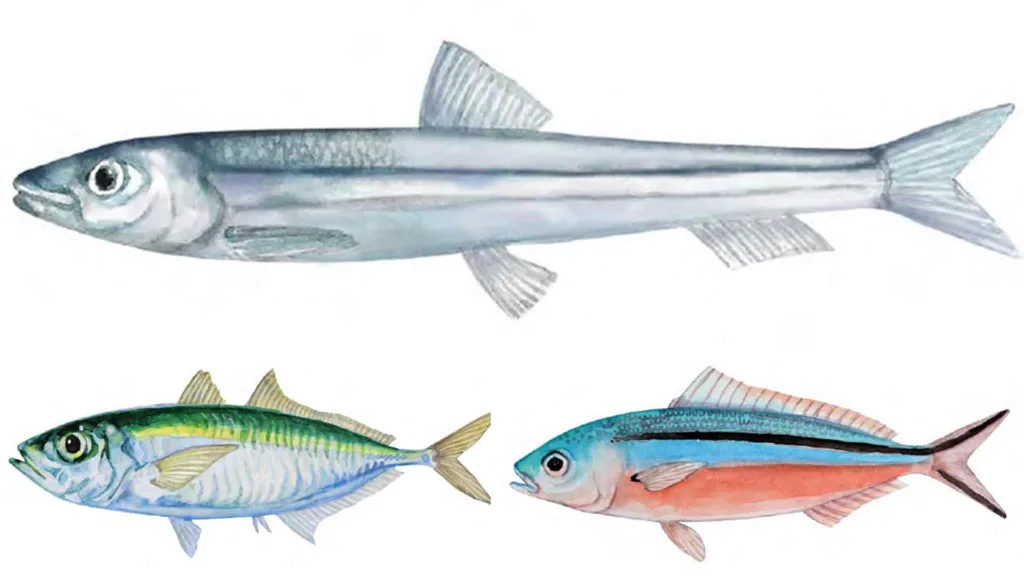
Sometimes, during our night fishing trips, we encounter a type of fish that moves incredibly quickly: the batfish. They put a great deal of force on the fishing line due to their oval shape and flat body. Batfish, particularly Teira Batfish (Platax teira), are frequently found in the Maldives. We notice them while fishing at night, even at relatively shallow depths, for fish such as bigeye trevally. This fish is known as Baiypolhi Mas in the Maldives.
Batfish are social and inquisitive fish. The movements that it makes are truly majestic. Large schools of them form, and other fish swim with them because of their docile and sociable nature. Their majestic appearance in the deep is revealed by this disposition.
Scientists have discovered that these fish can identify people. They can also survive in a variety of habitats; they can be found in shipwrecks, slopes, and reefs. They reside in the deep, at about 160 feet, and close to the surface. They consume algae, invertebrates, and plankton.
Three species from the genus Platax are found in the Maldives, and the batfish is a small family with five genera and roughly ten species. Juveniles have incredibly long fins, but as they mature, they gradually transform into nearly round, profiled fish.
Small juveniles live in open water and float with leaves and other debris from the land or with sargassum weeds in the wet season. They often settle in harbours beneath jetties and form small groups. Adults can live alone or in groups, and while they prefer deep water, they can feed in shallow water. Bottom invertebrates and zooplankton make up their diet, and you can sometimes see them nibbling on jellyfish.
Rounded Baitfish, Platax orbicularis
Adults are usually solitary, but they occasionally form schools. Juveniles typically gather in small groups near the bottom. Juveniles of pelagics imitate browned tree leaves. The two dark spots on the tail, opposite each other, at the end of the body fins, are the best way to identify juveniles. The sides of the adult’s pectoral fins are yellowish. A widespread Indo-Pacific region. 50 cm in length.
Tall-fin Batfish Platax terira
Longfin Batfish is another name for this species. Adults typically live alone or in small groups. It is best identified by a short dark bar on the anus that is typically visible but may fade in adults, as well as a black blotch on the side beneath the pectoral fin that is a part of the broad dark side band. Having very long dorsal, anal, and ventral fins, these tiny juveniles float beneath surface debris and form groups when they come across one another. They frequently settle under jetties and swim in mid-water. They can be found throughout the vast Indo-Pacific region. The length of this species is approximately 60 cm.
Boer’s Batfish Platax boersi
The species was only recently recognised as valid, and it had previously been confused with others. Juveniles resemble the tall-fin batfish, while adults resemble the rounded batfish. The juvenile Boer’s batfish is distinguished by its tall, somewhat triangularly vertical fins, while the adult has a very short mouth and a flat face. Indo-Pacific appears to be widespread. at least 50 cm in length.




